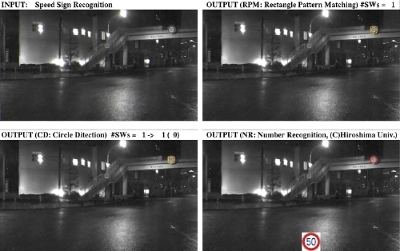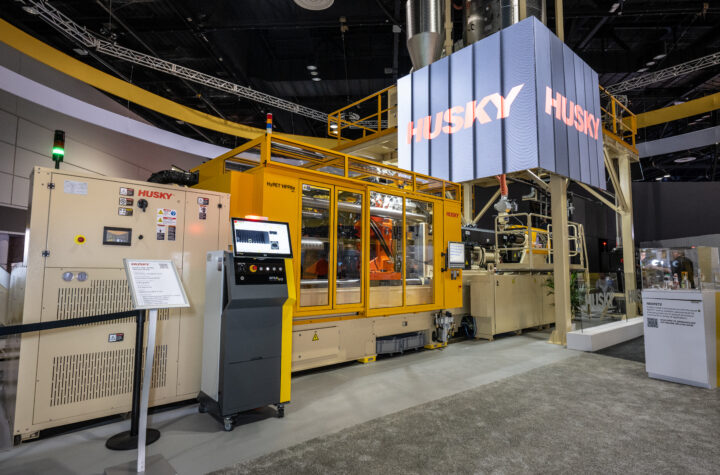Hiroshima University and Cadence Design Systems, Inc. (NASDAQ: CDNS) today announced that Hiroshima University ported its traffic sign recognition algorithms to the Cadence® Protium(TM) rapid prototyping platform and reduced its automotive Advanced Driver Assistance Systems (ADAS) algorithm development time by up to 70 percent. The Hiroshima University’s research team, led by Associate Prof. Koide of the Research Institute for Nanodevice and Bio Systems (RNBS), focused its efforts on achievements in traffic sign recognition algorithms.
Some of the major causes of the increasing number of traffic accidents are driver misjudgments and operational errors. Recently, the use of ADAS to reduce accidents has been attracting a lot of attention, and these systems are quickly becoming one of the most rapidly adopted automotive applications today. The RNBS research team at Hiroshima University has conducted research on the development of embedded systems for ADAS, which uses vehicle cameras to detect speed and recognize road signs to provide information to drivers in real time to reduce accidents.
The newly developed traffic sign recognition system is comprised of three processing parts: Rectangular Pattern Matching (RPM), Circle Detection (CD), and Number Recognition (NR), and it works even in difficult conditions–at night time, in the rain or with tilted and deformed signs. In the first phase of the design project, system bring-up time was reduced by implementing RPM using the Protium rapid prototyping platform and conducting hardware/software co-debugging.
The FPGA-based Protium rapid prototyping platform, part of the Cadence System Development Suite, is designed for early, pre-silicon software development and significantly improves productivity by reducing prototype bring-up time from months to weeks compared to competitive solutions. Early in the University’s research, the Protium rapid prototyping platform demonstrated its robust capabilities with the development of the complex image processing system prototype.
“We’ve been closely collaborating with Cadence on the adoption of the Protium rapid prototyping platform in order to significantly accelerate the development of our traffic sign recognition algorithms,” said Associate Prof. Koide in RNBS at Hiroshima University. “The Protium rapid prototyping platform enabled us to improve our productivity so that we could keep our focus on the development of the traffic sign recognition algorithms.”
“With a fully automatic implementation flow, the Protium rapid prototyping platform provided high performance that was further optimized with user-driven optimizations, essential for early software development at Hiroshima University,” said Dr. Nobuo Tamba, technology group director at Cadence in Japan. “By collaborating with the University team, we are contributing to advance the innovation in the area of ADAS algorithms.”
REFERENCES
— For more information on the Cadence Protium rapid prototyping platform,
please refer to the following URL: http://www.cadence.com/news/protium/
— For more information on the Research Institute for Nanodevice and Bio
Systems (RNBS), Hiroshima University, Japan, please visit the following
URL:http://www.RNBS.hiroshima-u.ac.jp/
— For more information on the Rectangular Pattern Matching Architecture,
please refer to the following paper, “Real-time Speed Limit Traffic Sign
Detection System for Robust Automotive Environments” IEIE Transactions
on Smart Processing and Computing, vol. 4, no. 4, August 2015. URL:
http://www.ieiespc.org/view_acticles/acticles_d.asp?j=25
About Cadence
Cadence enables global electronic design innovation and plays an essential role in the creation of today’s integrated circuits and electronics. Customers use Cadence software, hardware, IP and services to design and verify advanced semiconductors, consumer electronics, networking and telecommunications equipment, and computer systems. The company is headquartered in San Jose, Calif., with sales offices, design centers and research facilities around the world to serve the global electronics industry. More information about the company, its products and its services is available at www.cadence.com.
About Hiroshima University
The origins of Hiroshima University date back to the foundation of the Hakushima School in 1874. Through the amalgamation of eight schools in 1949, Hiroshima University was established under the new school system, with its main campus in Hiroshima City–an international city of peace and culture. At present, Hiroshima University has three campuses in Hiroshima City and Higashi-Hiroshima City, and boasts 11 faculties, 11 graduate schools, one hospital, 11 affiliate schools, two national collaborative research facilities and 21 other academic centers of various kinds. It is one of the most distinguished research universities in Japan, with 11,000 undergraduate students, 4,200 graduate students and 1,700 faculty members. For more detail, please visit the University website:http://www.hiroshima-u.ac.jp/.














































 Johnstown Wire Technologies Makes Significant Investments to Increase Capacity
Johnstown Wire Technologies Makes Significant Investments to Increase Capacity Windsor Assembly Plant Begins Production of All-New 2017 Chrysler Pacifica
Windsor Assembly Plant Begins Production of All-New 2017 Chrysler Pacifica Bonnell Aluminum to Invest $18 Million, Expand its Automotive and Specialty Markets
Bonnell Aluminum to Invest $18 Million, Expand its Automotive and Specialty Markets Agility Fuel Systems Unveils the Industry's Lightest 160 DGE Behind-The-Cab CNG Fuel System
Agility Fuel Systems Unveils the Industry's Lightest 160 DGE Behind-The-Cab CNG Fuel System Valspar Completes Extensive Upgrades to Automotive Training Center in Texas
Valspar Completes Extensive Upgrades to Automotive Training Center in Texas MICHELIN Launches Latest Version of its Industry-Leading Line-Haul Steer Tire
MICHELIN Launches Latest Version of its Industry-Leading Line-Haul Steer Tire



